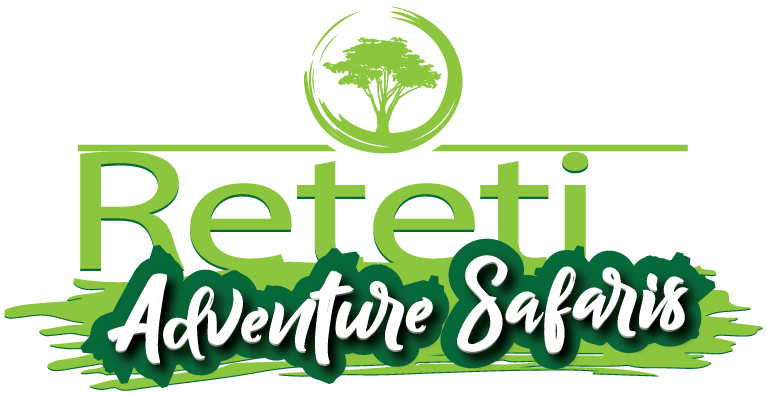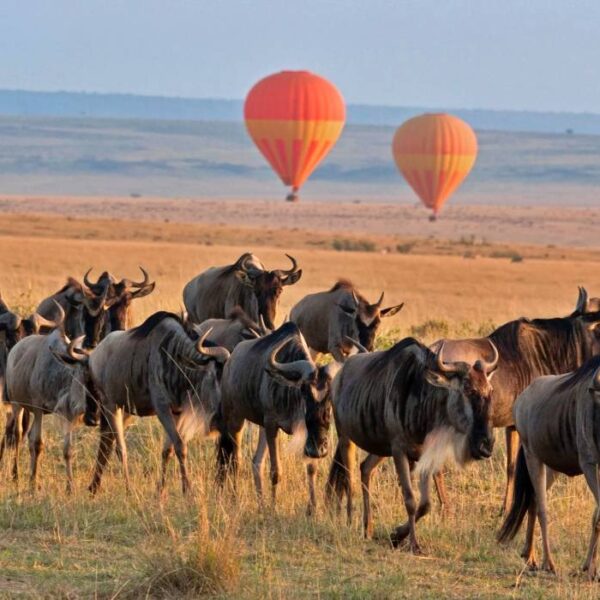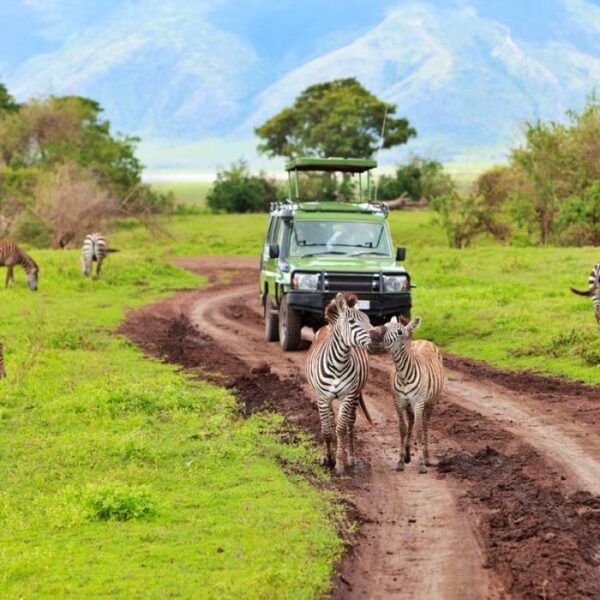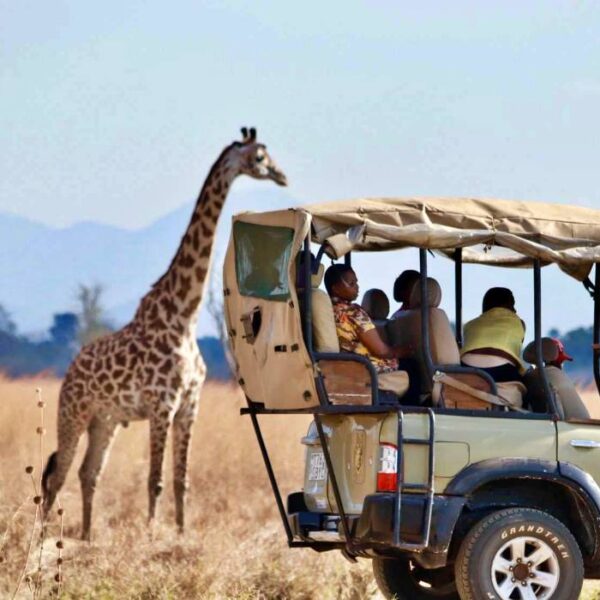While Tanzania is renowned for its iconic safaris, boasting some of the most spectacular wildlife reserves in Africa, there’s another adventure that draws explorers from around the world—scaling the mighty Mount Kilimanjaro. Standing at a staggering 5,895 meters (19,341 feet), Kilimanjaro is Africa’s highest peak and one of the most accessible, non-technical summits in the world. Conquering this majestic mountain offers a once-in-a-lifetime experience that transcends the typical safari. Here’s why climbing Kilimanjaro should be at the top of your adventure bucket list.
1. A Journey Through Five Unique Ecosystems
One of the most fascinating aspects of climbing Mount Kilimanjaro is the diversity of ecosystems you’ll encounter along the way. As you ascend, the landscape dramatically shifts through five distinct climatic zones, each offering its own beauty and challenges.
- Cultivated Farmlands (800-1,800 meters): The base of the mountain is characterized by lush farmlands where local Chagga communities cultivate crops like coffee, bananas, and maize. This region is rich in cultural experiences as you interact with the locals.
- Montane Forest (1,800-2,800 meters): The first major zone you’ll trek through is the montane forest, home to thick vegetation, towering trees, and an array of wildlife, including monkeys, antelope, and exotic bird species.
- Heath and Moorland (2,800-4,000 meters): As you gain elevation, the forest gives way to open moorlands filled with heather and giant lobelias. The climate becomes cooler, and the terrain rockier, with dramatic views of the looming peak.
- Alpine Desert (4,000-5,000 meters): At this altitude, the landscape turns arid and desolate, with rocky outcrops and minimal vegetation. The air is thinner, temperatures drop significantly, and you’ll experience the raw, rugged beauty of the alpine desert.
- Arctic Summit (5,000-5,895 meters): The final push to the summit takes you through an arctic-like environment with glaciers, snowfields, and a barren, wind-swept landscape. The views from the top are nothing short of breathtaking.
2. Trekking Routes: Choose Your Path
Mount Kilimanjaro has several routes to the summit, each offering different experiences in terms of scenery, difficulty, and duration. Here’s a breakdown of the most popular routes:
- Marangu Route (5-6 Days): Known as the “Coca-Cola Route,” Marangu is the most popular and easiest path to the summit. It’s the only route with huts for accommodation, making it more comfortable for those who prefer not to camp. However, the rapid ascent makes it less ideal for acclimatization, leading to lower success rates.
- Machame Route (6-7 Days): The “Whiskey Route” is more challenging but offers better acclimatization opportunities and stunning scenery, with varied landscapes from rainforests to glacial valleys. It’s the most popular camping route and provides a higher summit success rate.
- Lemosho Route (7-8 Days): For those seeking a quieter, more scenic climb, the Lemosho Route is a great choice. It starts on the western side of the mountain and offers plenty of time for acclimatization, making it one of the routes with the highest summit success rates.
- Rongai Route (6-7 Days): Approaching from the north, the Rongai Route is the only route starting near the Kenyan border. It’s less crowded and offers a more gradual ascent, making it ideal for beginners.
- Umbwe Route (5-7 Days): The steepest and most challenging of all routes, Umbwe is reserved for experienced trekkers seeking a more direct, adrenaline-pumping climb. However, it’s not recommended for those who struggle with acclimatization.
3. The Challenge of Altitude and Acclimatization
Scaling Mount Kilimanjaro is not a technical climb, meaning you don’t need specialized mountaineering equipment or experience. However, the biggest challenge is the altitude. The higher you climb, the thinner the air becomes, which can lead to altitude sickness. Symptoms include headaches, nausea, dizziness, and fatigue. To increase your chances of reaching the summit, it’s important to:
- Climb Slowly: The mantra on Kilimanjaro is “pole pole,” which means “slowly, slowly” in Swahili. Taking your time allows your body to adjust to the reduced oxygen levels, minimizing the risk of altitude sickness.
- Stay Hydrated: Drink plenty of water to keep your body functioning at its best. Staying hydrated helps with acclimatization and boosts your energy levels.
- Take Acclimatization Days: Choosing a longer route or adding extra acclimatization days significantly increases your chances of summiting. Routes like Lemosho and Machame offer better acclimatization opportunities.
4. Reaching the Summit: A Life-Changing Achievement
Summit day is the most challenging part of the climb, but also the most rewarding. Trekkers usually begin the final ascent at midnight to reach the summit by sunrise. The last stretch is steep, cold, and exhausting, but the moment you step onto Uhuru Peak, the highest point in Africa, is euphoric. You’ll be rewarded with panoramic views of the surrounding glaciers, the sweeping plains of Tanzania, and the immense feeling of accomplishment.
5. What to Pack for Kilimanjaro
Packing for a Kilimanjaro trek requires careful planning. Since you’ll be moving through various climates, it’s essential to pack for both warm and freezing conditions. Here’s a basic packing list:
- Clothing: Layered clothing is key, with moisture-wicking base layers, insulating mid-layers, and waterproof outerwear. Thermal gloves, hats, and socks are necessary for summit night.
- Footwear: Sturdy, broken-in hiking boots with good ankle support are a must. Gaiters are useful for keeping debris and snow out of your boots.
- Gear: A quality sleeping bag (rated for sub-zero temperatures), trekking poles, headlamp, and a daypack for your essentials are all crucial for the journey.
- Other Essentials: Don’t forget sunscreen, lip balm with SPF, high-energy snacks, a reusable water bottle, and sunglasses with UV protection.
6. Beyond the Summit: Experience Tanzania’s Rich Culture
Your Kilimanjaro adventure doesn’t have to end at the summit. Extend your stay in Tanzania to explore the country’s rich culture and natural beauty. Visit nearby towns like Moshi and Arusha, where you can immerse yourself in local markets, try traditional Tanzanian dishes, and meet the welcoming Chagga people who live at the base of the mountain. You can also combine your trek with a thrilling safari in the Serengeti or Ngorongoro Crater, where you’ll witness the incredible wildlife that makes Tanzania famous. Or, head to Zanzibar’s tropical beaches for some well-deserved relaxation after your climb.
7. Why Kilimanjaro is More Than Just a Climb
Climbing Mount Kilimanjaro is more than just a physical challenge; it’s a transformative journey that pushes your limits, rewards you with spectacular natural beauty, and leaves you with memories that will last a lifetime. Whether you’re an experienced hiker or a first-time adventurer, Kilimanjaro offers an adventure like no other, combining the thrill of the climb with the serenity of Tanzania’s diverse landscapes.
So, if you’re looking to go beyond the typical safari and embark on an adventure that will test your endurance and inspire your spirit, Mount Kilimanjaro awaits.



